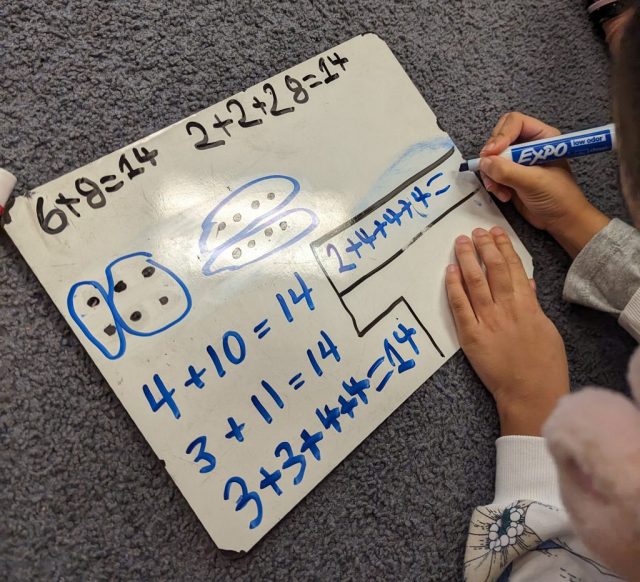
In Term 2, we continue to develop our number sense with a strong focus on addition up to 100.
What is number sense? You can think of it as “a person’s ability to understand, relate, and connect numbers.”
Our math learning takes form in different ways – worksheets, open-ended morning questions, picture books, games, drills (Chrono Maths), and number routines.
One such number routine is the ‘problem of the day’. This week, students have been reflecting on their addition strategies.
We’ve been using Carole Fullerton’s Good Questions: A Year of Open-Ended Math Problems for Grades 2-4 for daily discussion.
Open-ended questions are low-risk and inclusive to all learners. They invite multiple solutions and rich discussion. The class understands that so long as the answer ‘makes sense’ (ie. is logical), it is up for group consideration.
Students practice both creative and critical thinking skills during this activity, helping make math more dynamic. They also develop their communication skills as they might be asked to share their math thinking in different ways – symbolically, concretely, and/or verbally.
Open-ended questions include more students in the act of problem-solving. The more often we expose students to these key math ideas the more fluent they become; the more we recognize and celebrate different problem-solving approaches, the smarter the collective becomes. (Fullerton)
As the school year progresses, we’ll continue to build on this and other number routines.
